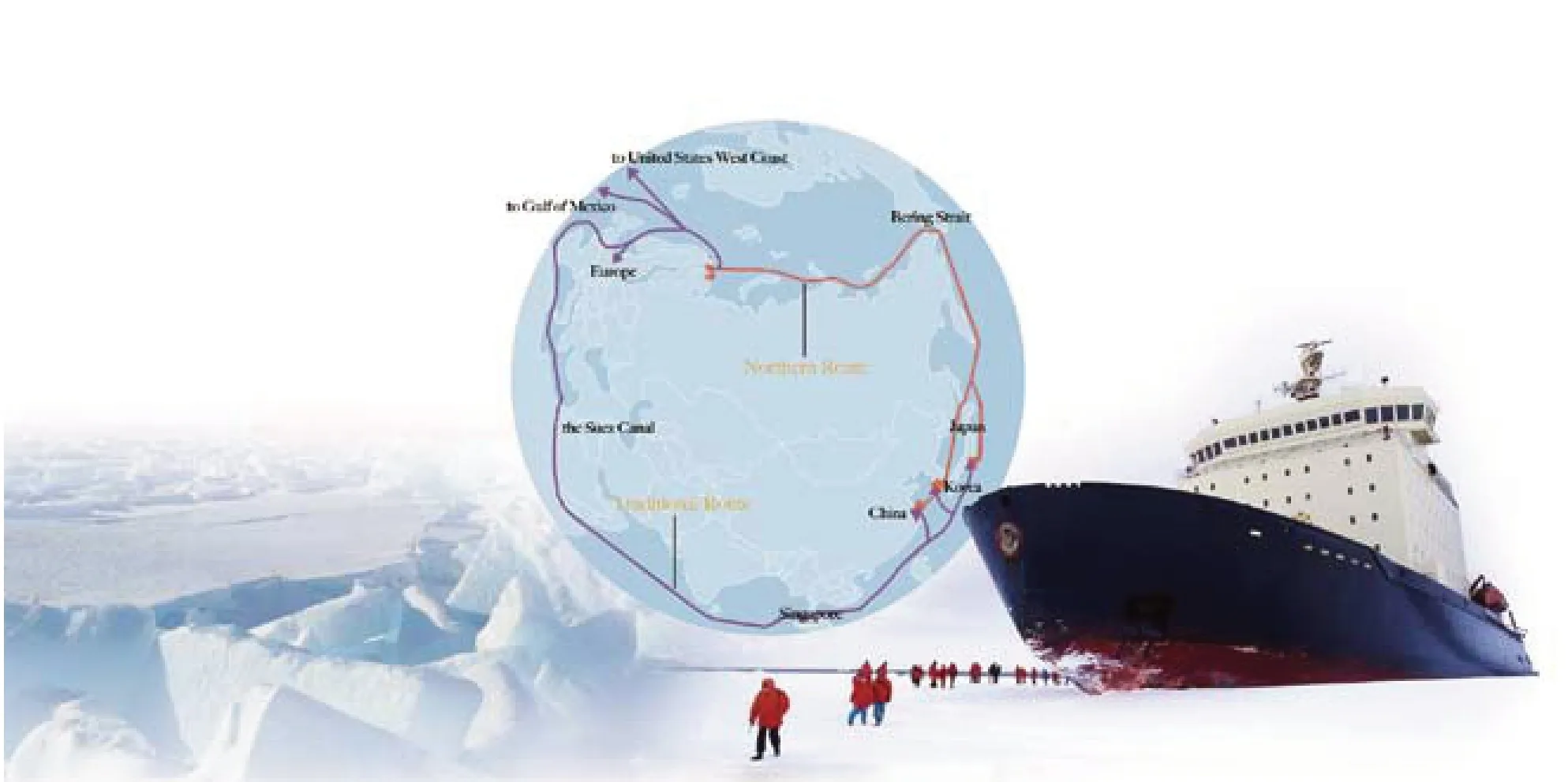Business Logic of the North Arctic Route
Reporter Li Xiaochuan

The continuous melt of the glaciers of the Arctic Ocean is making shipping in the polar area more and more realistic. Countries within the Arctic Circle have the advantage of being close to this area, and countries outside of the Arctic Circle are getting very active. From the point of shipping route development, what the global shipping industry is focusing more is the economic benefit after the Arctic Ocean Route is opened for shipping.
At present, there are three shipping routes connecting Europe and Asia: the Suez Canal, 19931 kilometers,taking about 35 days; the Panama Canal, 26186 kilometers, taking about 40 days; the Cape of Good Hope, 22356 kilometers, taking about 46 days. As a contrast, the Arctic route is only 12456 kilometers,cutting the time by half by taking only 22 days. The reduction of distance means the decrease of cost. In the future, the world shipping pattern will be changed if more and more ships choose the arctic route.
Professor Lu Junyuan of Jiangnan College of Social Science points out that this “international artery”connects a series of strategically important locations and international hot points, from Malacca Strait-North Indian Ocean-the Red Sea-the Suez Canal-the Mediterranean-the Strait of Gibraltar-the Caribbean Seathe Panama Canal-the Southeast Asia, forming lots of strategic hot points and locations of strategic importance.Once the Arctic route is opened for shipping, the cargo volume which is transported via the original routes will be diverted, thus reducing the importance and position of the original world shipping routes, and then that of the nations where these routes are located. The strategic position of the mid way of the globe will be reduced,and that of the arctic area will be increased. This contrast will lead to northward shift of the center of the world,changing the world pattern to some extent.
In addition, once the Arctic route is opened for shipping,a new artery connecting the Pacific Ocean and the Atlantic Ocean will certainly promote the integration between nations in North Pole and raise the strategic position of this area. The new route may drive the economic development along the route, giving birth to new residential areas, promoting port and city development and the increase of population. The geopolitical influence of nations along the route will also be enhanced.
Director Zhang Xia of the Polar Area Research Center of China points out that the Arctic Route mainly includes “the logistic supply from Russia and Canada to their arctic areas, Arctic resources export and transit trade.” The oil and gas resource of the Arctic area is abundant, equivalent to 55000 million tons of crude oil. About 37000 million tons are near Russia. There is great demand for oil and gas transportation and it seems that the route will be mainly used for the oil and gas transportation. In recent years, the energy product transportation taking up more than 70% of the handling capacity of the Northeast Route is an indication of this fact.
However, will the Arctic-Circle countries agree that the Arctic Route will be used for some time as an energy transportation line? The answer is No. The traditional routes from Asia-Europe and Asia-North America routes connecting the Asian manufacturing center and the consuming centers in Europe and the North America are the busiest and the largest in scale container shipping routes. The great increase of the container transportation along the Panama Strait and the Suez Strait is becoming the bottleneck of these two traditional routes, the cost of waiting in line is increasing year by year. With the problems of environment, safety and cost becoming more and more prominent, more and more people put their hopes on the opening of the Arctic Route.
The Arctic route, if put in operation, may share the pressure of the Suez Canal and the Malacca Strait,breaking the monopoly of canal routes and may be also an effective supplement to the container trade. Zhang Xia believed that the Arctic route may share 50% of the cargo volume of the two canal routes, reflecting that under the same condition of operating throughout the year, the two routes which are competitive can reach the balance via respective management and service charge.This in fact is based on the assumption of the limit value of the shared volume that the Arctic route can take.
Of course, the requirement for container transportation is higher, which includes punctuality and all-season shipping. If the sea ice melts continually, the shipping time may be further increased and the technical feasibility of container transportation will also be increased. There are few container ships in Arctic route trial trips, and the concern is more about technology. But according to some foreign assessment reports, several hundreds of dollars may be reduced for each TEU. It is yet not clear whether containerships will be the best ship type to utilize the Arctic route and domestic experts are of different views. Related bodies and enterprises are doing their best to make sure that the Arctic route can be best utilized to serve the economic trade.

